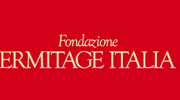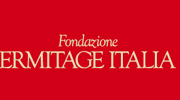Catalogue of the Italian Paintings of the XVII Century at the Hermitage Museum
Project location: Russian Federation, St. Petersburg
Project start date: October 2008 -
Project end date: December 2009
Project number: 2008-09
Beneficiary: FONDAZIONE ERMITAGE ITALIA
The Ermitage Italia Foundation was born as a direct branch of the Hermitage Museum in St. Petersburg. The main aim of the Ermitage Italia is the study and the preservation of the European cultural heritage. The collections housed at the Hermitage Museum, which can really be considered the museum of the world, provide a deep inspiration. With its three millions pieces of art collection, the Hermitage covers every field of the story of Art, from the archaeology of the far East to Painting, Sculpture and Decorative Arts from the Middle Age to the XX century in Europe. The collections of European painting are regarded among the finest of the world and they are displayed in 120 rooms of the 6 magnificent historical buildings, situated along the embankment of the river Neva, in the heart of St. Petersburg, by which the Museum is composed. The most important building among them is the Winter Palace, projected by the Italian architect Francesco Bartolomeo Rastrelli between 1754 and 1762. The second half of the XVIII century was the most remarkable period for the birth of the Hermitage collection.
Due to the passionate interest of the Empress Caterina the Great, the nucleus of the actual collections was purchased around 1764. A lot of masterpieces joined St. Petersburg at that time, like the Madonna Benois and the Madonna Litta by Leonardo, and the paintings by Giorgione, Titian, Raphael and Michelangelo. The purchase of paintings on the French and on the British market of art brought to Russia, in the last decades of the XVIII century, a lot of masterpieces by Caravaggio, Guercino and Rembrandt. The collections were increased still in the XX century, with the imposing works by Matisse and Picasso purchased directly from the artists in Paris by Russian collectors.The Hermitage Museum has started, in the last decade, a policy of cultural contacts and exchanges with Museums and Cultural institutions abroad.
The Ermitage Italia Foundation was born to establish more solid cultural relationships between Russia, Italy and the rest of the world. The Scientific Committee of the Ermitage Italia is composed by the most relevant personalities in the international domain of the history of Art, history of Western Culture and preservation and restoration of works of art. The President of the Committee is Professor Mikhail Piotrovsky, Director of the Hermitage Museum, and the Committee has two directors, Irina Artemieva (Russian director) and Francesca Cappelletti (Italian director) and twelve members, among which are the curators of the most important Departments of the Hermitage Museum, The Florence Museum Soprintendente Cristina Acidini Luchinat; the Museo del Prado of Madrid chief curator Gabriele Finaldi; the director of the Vatican Museums Antonio Paolucci; the director of the National Gallery of London Nicholas Penny.
Even if the Ermitage Italia Foundation has a recent history, it has already organized the Garofalo exhibition in the Castello estense of Ferrara, it has edited the Catalogue of Italian Sculpture at the Hermitage Museum and it has organized several conferences on restoration of mural paintings and preservation of paintings in Western Museums.
The project co-funded by the Nando Peretti Foundation and by the Ermitage Italia Foundation is the Catalogue Raisonné of the Italian Paintings of the XVII century. Some of the works of art of this section, which could be estimated in more or less one hundred fifty to two hundreds pieces, are well-known masterpieces, like the Lute Player by Caravaggio, but a lot of them are still to be published. An inventory has so far been prepared, but all the scholars' work is still missing. A lot of paintings need a deep study, to clarify their attributions and history. The project will be carried out in twelve-fourteen months; a study group, composed by three people: dr. Barbara Ghelfi (a distinguished scholar in Seicento Italian painting), a Russian scholar from the Hermitage and Prof. Francesca Cappelletti (the Italian director of the Hermitage and supervisor of the research).
As every research in the field of the history of Art, the Catalogue will start with a complete observation and direct analysis of the works of art. The researchers are going to spend a period of study at the Hermitage Museum, trying to make a first and rough version of the catalogue, taking photographs, measurements, and descriptions of each painting. They will outline how many paintings have to be included in the Catalogue, revising dates and attributions and visiting the paintings on storage (not all the collections are on public display).After this first phase of the research, a scholar study of each painting will be started, based on the comparison to other paintings in different Museums in Italy and abroad and on study and bibliographical research in specialized Libraries, such as the Kunsthistorisches Institut in Florence, the Courtauld and Witt Libraries in London, the Bibliotheca Hertziana in Rome. Ancient sources, documents in European archives on the history and provenance of the paintings will be taken into account. For each painting, the study group will write an entry with all the information, technical and historical data, in order to be ready for the publication in the next times.
The research will be exposed to scholars all over Europe and will be explained in Seminars and Conferences, at least two during the year 2009, one in Italy and one abroad.






